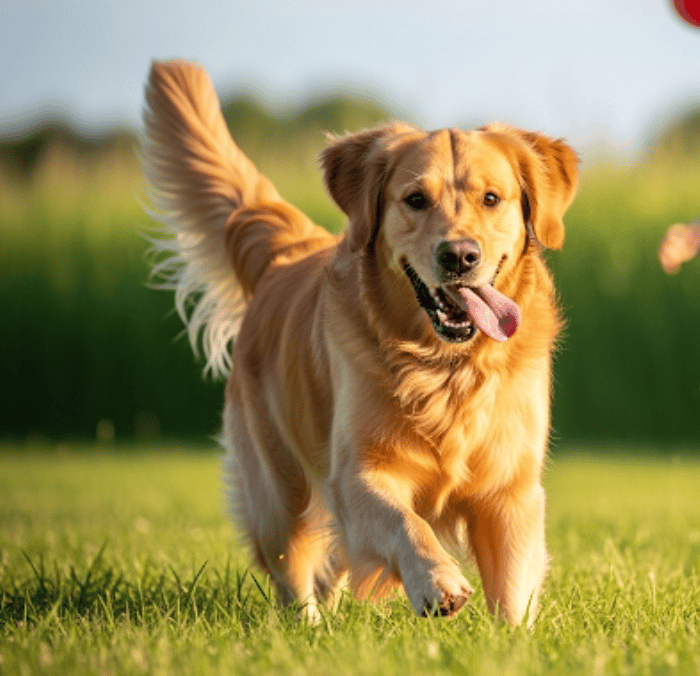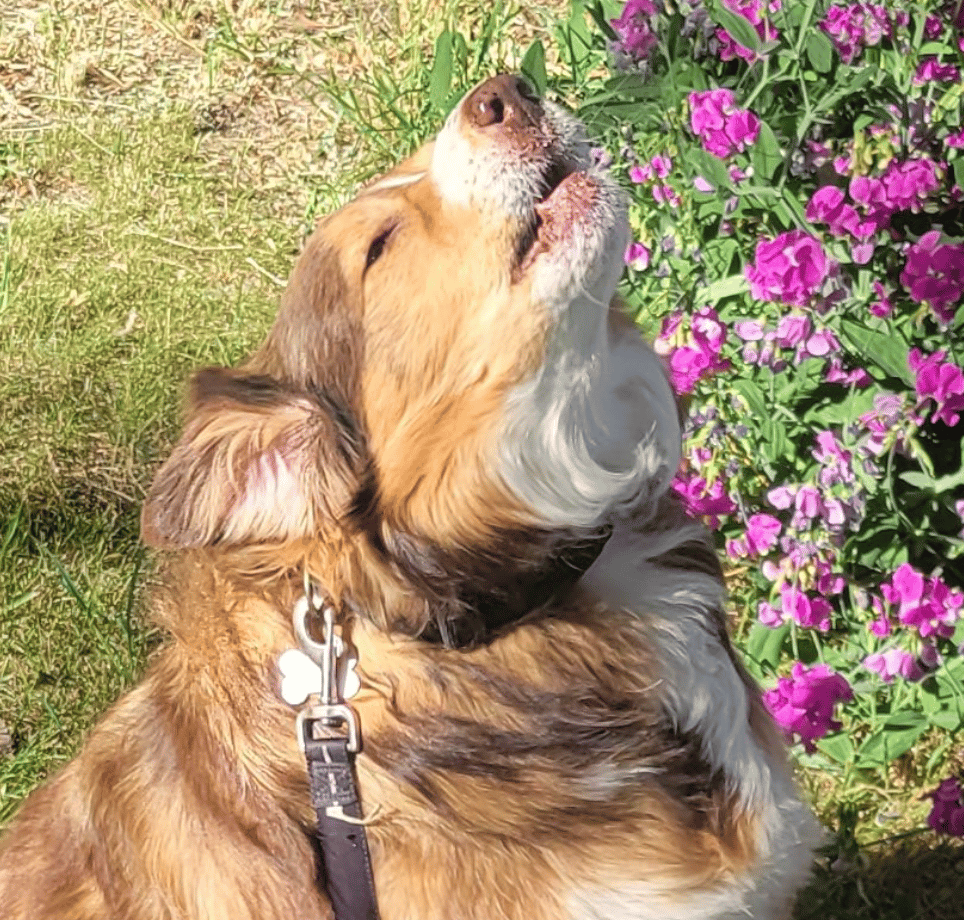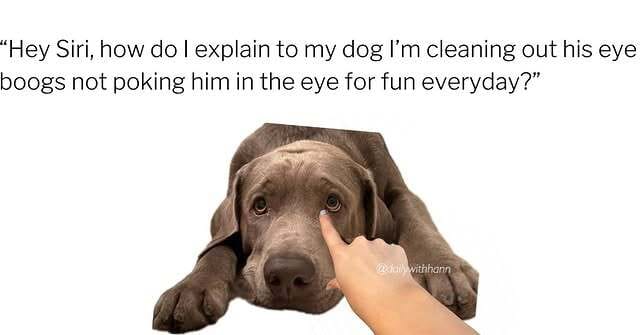Your daily dose of doggy goodness!
Every day, we celebrate our shared love of dogs and hopefully brighten your day. Enjoy!
Dog of the Day: Zuko!
Meme of the day: Sorry, pal!
America’s Animal Rescue Giveaway!
Get ready to wag your tails because I Love Every Dog is amplifying the love for our four-legged friends by celebrating the incredible heroes who dedicate their lives to saving them! In an exciting new initiative, we're partnering with Animal Actions to honor the vital work of animal rescues. We'll be donating up to $10,000 to a deserving animal rescue chosen by a random draw. Imagine the impact that could have on countless lives!
What’s Up with the Evening Zoomies?
As the sun sets and twilight descends, many dog owners observe a curious phenomenon: their once-calm canine companions transform into whirlwinds of unbridled energy. The "zoomies," as they're affectionately known, often strike just when you're settling down for the evening, leaving you to wonder: Why do dogs get so hyper at night?
It's a common and often amusing experience, but there are several fascinating reasons behind this nocturnal burst of canine enthusiasm. Let's delve into the science and psychology behind your dog's evening antics.

The "Rebound Effect" from a Day of Rest
For many dogs, especially those whose humans are out working during the day, daytime hours can be a period of relative inactivity. While they might get a walk or two, a significant portion of their day is spent napping, lounging, and generally conserving energy. Come evening, they've had hours to recharge their batteries, and that pent-up energy needs an outlet. It's like a spring that's been compressed all day, just waiting to be released!
The Call of the Wild (Even if it's Just the Backyard)
Dogs, regardless of how domesticated they are, retain some innate instincts from their wild ancestors. In the wild, dusk and dawn are often prime hunting times for predators. While your dog isn't out hunting squirrels in your living room, there's a primal association with these times of day that can trigger a heightened sense of alertness and a desire to be active. The cooler temperatures of the evening can also be more inviting for vigorous play than the heat of the midday sun.
Anticipation of Evening Routines
Dogs are creatures of habit, and they quickly learn to associate certain times of day with specific activities. Evening often brings with it exciting prospects: the last walk of the day, playtime with their human companions, dinner, or even just the joy of having their family home and settled. This anticipation can build up throughout the afternoon, culminating in an explosion of excitement when those anticipated events are just around the corner.
The "Wind-Down" Walk and Scent Overload
For many dogs, the evening walk is a highlight. Not only does it provide physical exercise, but it's also a mental workout. Dogs explore the world through their noses, and an evening stroll offers a symphony of new and intriguing scents. This sensory overload, while enjoyable, can also be stimulating. Sometimes, a dog might come back from an exciting walk still buzzing from all the new information they've processed, leading to a post-walk zoomie session.
Age and Breed Considerations
Just like humans, a dog's energy levels can vary with age. Puppies, with their boundless energy and developing brains, are notoriously prone to evening zoomies as they explore and learn about their world. Adolescent dogs, too, often have an excess of energy to expend. On the other end of the spectrum, some older dogs might experience cognitive decline that can manifest as restlessness or unusual energy bursts in the evening.
Breed also plays a significant role. High-energy breeds like Border Collies, Jack Russell Terriers, and many sporting breeds are practically hardwired for activity. If they haven't had sufficient physical and mental stimulation during the day, their evening hyperness is a sure sign they need more outlets for their natural drives.
What Can You Do?
While evening zoomies can sometimes be inconvenient, they're a natural and often healthy expression of your dog's joy and energy. Here are a few tips to help manage and channel that nocturnal enthusiasm:
Front-Load the Day with Activity: The best defense is a good offense! Ensure your dog gets plenty of physical exercise and mental stimulation throughout the day. This could include longer walks, runs, fetch, puzzle toys, training sessions, or doggy daycare.
Establish an Evening Routine: Predictable routines can help your dog understand what to expect. A consistent "wind-down" routine in the evenings, perhaps involving a final potty break, a calming chew toy, or a gentle petting session, can signal that it's time to settle.
Engage in Calm Play: Instead of high-octane games right before bedtime, opt for more calming activities. A gentle game of tug, a sniffari in the backyard, or some trick training can provide mental engagement without overstimulating them.
Provide Chew Toys and Puzzle Toys: These can be excellent ways to channel excess energy and provide mental enrichment. A long-lasting chew or a puzzle toy filled with treats can keep your dog happily occupied.
Consider a "Decompression Walk": If your dog gets particularly hyped after a regular walk, try a "decompression walk" – a leisurely stroll where your dog gets to sniff and explore at their own pace, with minimal direction from you. This can be more calming than a brisk, structured walk.
Ultimately, your dog's evening hyperness is often a sign of a happy, healthy, and well-rested animal. By understanding the reasons behind their nocturnal energy and implementing strategies to meet their needs, you can not only manage the zoomies but also deepen your bond with your beloved canine companion. So next time your dog decides to go full throttle at sunset, take a moment to appreciate their zest for life – and perhaps join them for a quick, joyous romp!
Vet bills won’t break the bank if you have the right insurance
Surprise vet bills can certainly bite. But fear not, pet insurance can be your lifeline. Some plans cover major surgeries — which can cost up to $7,000 — so you can afford the best care for your pet. Check out our top-rated pet insurance providers, with some plans offering coverage for just $1 a day, multi-pet coverage, and reimbursement options of up to 90%. With the right coverage, you could keep your pet (and your wallet) happy.
Dog Food and Supplement Recalls
Here are the recent recalls and advisories:
Savage Pet - Cat Food Chicken for potential bird flu exposure
Wild Coast Raw - Frozen Boneless Free Range Chicken Formula raw pet food for cats for possible bird flu exposure.
Blue Ridge Beef - Natural Mix for potential salmonella.
The Smile Section
Family Photo of the Day:
Willa!

We want to feature your pup!
We want to share your pup with our pack. Email us your favorite doggy pic or video with your pup’s name, and we'll try to feature it as a family photo in one of our upcoming newsletters or on our Facebook page.
Interested in reaching our audience?
Like newsletters?
Here are some newsletters our readers also enjoy:
Share our newsletter with your friends!
We’ll donate on your behalf!
🐶 Refer 10 people: We will donate a box of treats to an animal rescue 🐶
🐶 Refer 50 people: We will donate a bag of dog food to an animal rescue 🐶
🛏 Refer 100 people: We will donate a dog bed to an animal rescue 🛏
{{rp_personalized_text}}





